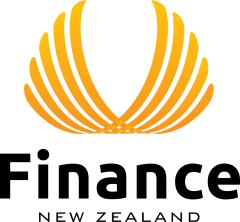Reserve bank changes
Date
29 May 2019
Share

If the Reserve Bank’s proposal is implemented, it is likely to result in a combination of higher lending rates, lower deposit rates, and, potentially, lower returns on equity for the main bank lenders.
Lending markets are also likely to change, with the ‘big four’ Australian banks becoming more discerning about the volume of lending to low-return sectors or higher costs of borrowing for customers. This could also result in the emergence and growth of non-bank lenders, something we have certainly seen in the property sector on both sides of the Tasman, as the large banks have reduced their lending appetite in this sector.
The upshot for business lending customers is that they will be risk graded by their funders. Risk grading is already a function of a bank lending decision and their portfolio management, but we expect this to have a greater influence on a bank’s appetite to lend and at what cost to the customer, should the bank’s capital requirements increase. At a small business level, depending on the financier, risk grading is likely to be an automated process that looks at primarily account conduct and track record.
For commercial customers, risk grading is a more complex process and works as follows:
- Financial accounts are assessed by ‘models’ that look at key financial ratios. There is some variance between banks. For example, some models may be more focused on balance sheet strength, while others may take a closer look at cashflow. Some banks primarily look ‘backward’ at historical results, while others have greater discretion to look ‘forward’ and take into account detailed and justifiable financial forecasts.
- Some subjective inputs are assessed: client diversification, strength of management, time in business, etc.
- The overall industry is considered, particularly the scale of the business and sector risk.
- Historical account conduct is also taken into consideration. Things like regular excesses (outside the overdraft limit), extension of working capital facilities, or bounced payments will impact this.
- The bank’s security position. How much security is held against the loan, and what is the percentage of loan to the value of their security? In other words, what could the lender recover in a liquidation scenario relative to the debt owed.
Similar Posts
27 August 2025
Cash flow pressure? We can help you keep your business moving forward.
During this challenging economic climate, reviewing your performance and uncovering cost-saving opportunities is a savvy move that ensures you maintain strong cash flow and business resilience.

14 July 2025
Navigating property finance with lower CVs? We can show how to navigate the changing market and position your lending for better outcomes.
With capital values softening across parts of New Zealand, many borrowers are finding that lower CVs can impact how much they can borrow — especially when property is being used as security. While CVs don’t directly set lending limits, they influence how lenders assess risk and scale your available equity. At Finance New Zealand, we help clients navigate these challenges by working with multiple lenders, using alternative forms of security, and structuring finance that supports long-term growth — even in a tighter lending environment.


Page Links
Contact us
Finance New Zealand Limited L11 BDO Tower, 19-21 Como Street, Takapuna, Auckland 0622 PO Box 65164, Mairangi Bay 0754 T: (09) 222 0320E: info@financenz.co.nzMember of


Proud Sponsors of Auckland Rescue Helicopter Trust
Copyright Finance New Zealand Ltd 2025



